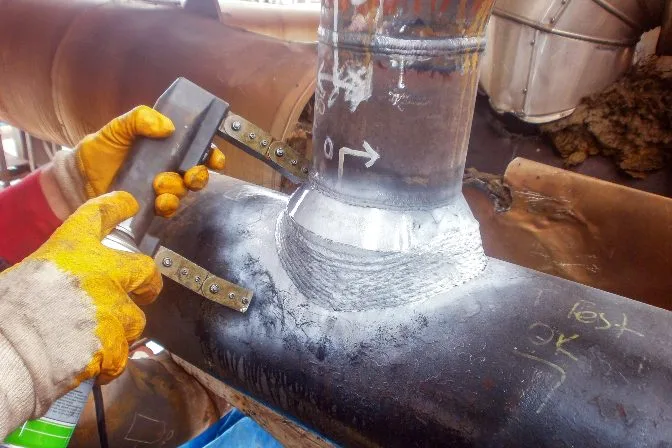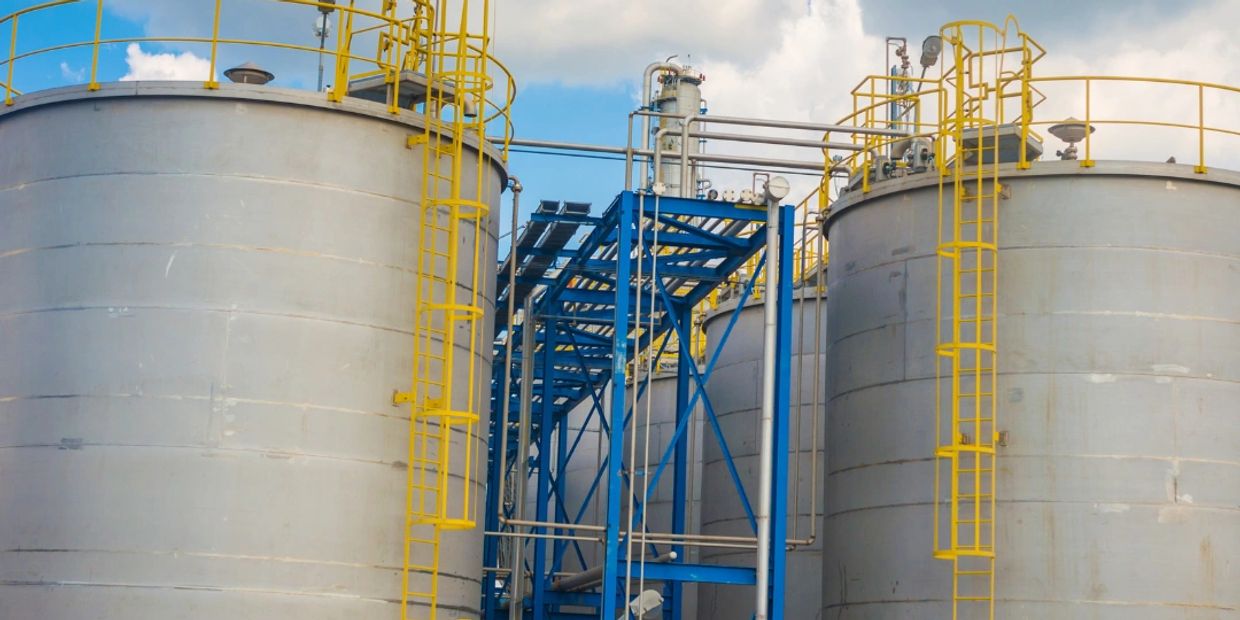A Comprehensive Introduction of Storage Tank Welding Inspection Specifications and Methodologies for Improved Weld Top Quality and Performance
The significance of welding evaluation standards in the production of tanks can not be overemphasized, as they offer as the foundation for guaranteeing weld honesty and operational reliability. Various evaluation methods, consisting of aesthetic assessments and progressed non-destructive testing approaches, are essential in determining potential imperfections that can endanger performance.
Significance of Welding Inspection Standards

Welding examination criteria incorporate a variety of criteria, including product specs, welding treatments, and qualifications of employees involved in the welding process. By implementing these criteria, organizations can systematically recognize and rectify prospective issues, thereby lowering the possibility of expensive fixings or tragic failures. Extensive evaluation techniques promote a culture of responsibility and accuracy, urging welders to keep high levels of workmanship.

Usual Welding Assessment Techniques


Ultrasonic Checking (UT) is one more prevalent method, making use of high-frequency audio waves to detect interior defects that may not be visible externally. This approach is particularly efficient for identifying gaps or additions within the weld metal. Magnetic Bit Testing (MT) is also commonly utilized, especially for ferromagnetic materials, as it reveals surface and near-surface flaws through the application of magnetic fields and ferrous particles.
Additionally, Liquid Penetrant Testing (PT) finds surface-breaking issues by using a penetrant to the weld and after that utilizing a designer to attract out the penetrant. Each of these techniques adds to a comprehensive inspection technique, ensuring that welds satisfy the rigid high quality criteria required in storage tank building.
Regulatory Criteria and Conformity
Regulatory requirements and compliance are necessary components in ensuring the safety and security and reliability of welded frameworks in tank construction - Tank Welding Inspection. These standards serve to develop minimum requirements for product homes, welding procedures, and inspection methods, therefore minimizing the threat of architectural failures and boosting general efficiency
Trick companies, such as the American Culture of Mechanical Engineers (ASME) and the American Welding Culture (AWS), provide guidelines that are commonly adopted in the sector. Conformity with these requirements not just makes sure adherence to best techniques however also fulfills legal and contractual responsibilities, securing the rate of interests of stakeholders.
Governing bodies typically mandate adherence to details codes, such as ASME Code Section IX for welding credentials and API 650 for bonded tanks. These codes lay out requirements for welding methods, qualifications of personnel, and screening techniques to validate weld stability.
Normal audits and assessments are essential to preserving conformity, as they assist identify variances from established standards. Non-compliance can lead to considerable fines, project hold-ups, and click this safety risks. Thus, a durable understanding of governing standards and a commitment to compliance are critical in achieving high-quality and sturdy bonded container structures.
Non-Destructive Checking Techniques
Just how can the stability of bonded frameworks be ensured without creating damage? Non-destructive testing (NDT) techniques offer a robust remedy, allowing examiners to examine weld quality without compromising the product - Tank Welding Inspection. Amongst the most common NDT methods are ultrasonic testing (UT), radiographic testing (RT), magnetic fragment testing (MT), and dye penetrant testing (PT)
Radiographic testing involves passing X-rays or gamma rays via the weld, developing pictures that reveal structural problems such as fractures or voids. This method is invaluable for evaluating the stability of complicated welds.
Magnetic fragment testing is fit for ferromagnetic products, where electromagnetic fields reveal surface area and near-surface suspensions. Dye penetrant screening makes use of a liquid color to highlight surface-breaking imperfections, making it an efficient method for non-porous products.
Each of these sites NDT techniques has distinctive advantages, allowing for thorough evaluations customized to particular materials and welding procedures. By implementing these techniques, sectors can guarantee the integrity and safety of bonded structures, eventually improving general performance.
Enhancing Weld Quality Through Assessment
Effective examination plays an important role in boosting weld high quality, working as an essential checkpoint in the construction procedure. By identifying possible flaws early, evaluations alleviate the threat of jeopardized structural honesty and make certain conformity with sector standards. Utilizing a mix of visual exams, non-destructive testing (NDT) techniques, and mechanical evaluations, assessors can find concerns such as porosity, splits, and incomplete fusion.
Applying a durable assessment procedure not only enhances the general top quality of welds however additionally fosters a society of liability amongst welders and fabricators. Regular training and accreditation of examination workers ensure that they are furnished with the necessary skills to identify and address prospective issues efficiently. This positive method lessens rework and connected costs, eventually adding to predict efficiency.
Additionally, thorough paperwork of assessment searchings for supplies important understandings into persisting concerns, facilitating constant enhancement in welding practices. By leveraging innovative modern technologies, such as automated ultrasonic screening or digital radiography, weld top quality can be improved through more precise evaluations. Finally, an extensive assessment procedure is important in accomplishing top quality welds, guaranteeing safety and security, reliability, and durability in storage tank fabrication.
Verdict
In final thought, the implementation of rigorous storage tank welding inspection standards and approaches is crucial for ensuring weld honesty Find Out More and performance. By using a combination of aesthetic assessments, non-destructive screening methods, and adherence to regulatory criteria, companies can efficiently determine and alleviate possible flaws.